Rem Koolhaas: 'All architectures are survivors'
December 21, 2009

Full version of the authors of the interview published in the El País Babelia supplement with the title Vivimos un urbanismo loco (We are living through a crazy urbanism) (19/12/2009).
This interview had been prepared in the classic style, with questions for Rem Koolhaas concerning the important themes of his discourse, the ideas he deals with in his writings, but after having attended his conference in Bordeaux (Ville d’aujourd’hui, vies de demain, les grandes conférences d’architecture, organized by arc en rêve centre d’architecture), we believe that the Centro de Congresos de Córdoba, the sole OMA project in Spain, recently taken up again, sums up much of his present concerns. This deals with the co-existence between modernity and spontaneity, with the future or the architecture between the iconic and the generic, with the perdurance of the traditional city model, with the ambition of cities and their financial capacity, with the survival of big architecture at times of crisis...
Rem Koolhaas appears in the dramatic central nave of L’Entrepôt Lainé, dimly lit and with a provisional hall set up for the occasion, amidst an art installation and facing a mainly young submissive audience.
He speaks of naturalness and artificiality, that architecture revolves around a permanent doubt about this duality.
“One of the results of this doubt is our inability to recognise life in any other place apart from the city centres. This doubt has condemned the neighbourhoods to belonging to an obligatorily secondary position, without granting them any capacity to live and be happy. At the same time, we feel unable to recognise that projects from the sixties, seventies and eighties bear values. This is an inability to value our recent past, which has been sentenced to an immediate amnesia. This doubt is something for which we pay a high cost. The cost of pleasure in the cities. It also costs us the pleasure of the unknown and that of adventure, which may be the essential part of the city”.
He shows a black and white photo of an indefinite time, of a public space dominated by fog, with street lights lit at night. We cannot see the buildings. He vehemently attacks the excesses of urban design.
“In the contemporary night scene it is not the urban condition which is seen, but the public space defined by artistic means, by design. We are beginning to recognise that probably the design of public spaces is the most repressive means that exists, among the great number of strategies we have designed to de-naturalise the city. I am aware that it is a strange word, but the city has been de-naturalised by an excess of design. Design as a means for exclusion. What is the present situation? We live with the lack of manifestos, with the lack of architectural reflection. As such, we are living an ideological life which we just do not understand at all. What I can do is theorize on the consequences of the dominant market system in the last twenty years. And, what are the consequences of this system on architecture? For, in reality the market has implied an enormous transfer from the public sector to the private sector and has removed the base on which architect stood, who before was a servant for good and has now become a servant for the private. The architect has completely changed status and the current phenomenom of the starchitect is a mere compensation for this change”.
He lets off steam concerning the criticism received.
“I feel like the messenger from another world, who says that other phenomena exist, but the relationship has become a type of dialogue between deaf people. They have preferred in a somewhat simplistic way to believe that it was I who stimulated the market, the shopping, the technology of manipulation. That it was I who loved the city as a commercial labyrinth, when, on the contrary I was only curious to see if it was possible to live in a situation like that. I am viewed as Mr. Anti-context, but this name is ambiguous, because it also has been said the opposite, as if we were context fetishists, like all the rest”.
He describes the Asian city.
“Suddenly, we face a very different city typology -the non-Western city-, which we find completely incoherent, but which we can analyse as an urban object, which is established in easy situations and which avoids difficult relationships, such as complicated orography. Certainly the non-Western city is an opportunist city, yet at the same time it has the capacity to deploy on all sides an urban culture using prototypes which among ourselves could not work with that same logic”.
He attacks an American city prototype of healthy, pleasant and peaceful living.
“The problem of our inability to truly understand the city can be summed up in a sole name: Vancouver. A peaceful Canadian city, which has become the model, in the absence of others, of the more or less correct city, more or less friendly, more or less blah blah blah”.
He reinforces his position with a moral statement.
“Our inability to modernise our own concept of the urban condition has led us to a crazy urbanism, which appears on all sides, which surrounds us, with its mediocrity, with its sustainable symbolism of the worst kind, with a green cynicism, a dead loss of public space which has become a more and more radical space for exclusion. Our office has tried to escape from all this. That is why some time ago we launched the idea of a generic architecture, inspired in Erasmus, Luther and Calvin, taking on in this way our own Calvinism”.
The next day, on the terrace of the hotel Saint James in Bouliac, with Bordeaux covered in mist, Rem Koolhaas responds relaxedly.
QUESTION. Just as Spain is going through a time of crisis, the Córdoba project is going to commence -seven years since you won the competition-, thanks to a series of changes in the institutions and coinciding with the candidacy of Córdoba for 2016 European City of Culture. It seems to be a spontaneous event, or it may well be a movement of the stars. We would like to know your feelings on the form in which the project is going to move forward.
ANSWER. It is a bit paradoxical. You talk about astrology and I agree. I have always had a strong feeling that this was going to happen, mainly because it is like an event which only occurs at a given moment. It is something which Rosa [Aguilar, formerly Mayor of Córdoba, currently Minister for Public Works and Transport in the Andalucía Government] wanted to do. She is a person who is uncommon in the world of politics, with true consistency. At the same time, I have always had serious doubts about the involvement of the private sector in all public buildings. I believe that in Europe, for the last ten years, there is an enormous contradiction between ambitions and money and that we can always find exotic ways such that political ambitions are satisfied. Sometimes, one realises that the involvement of the private sector is not always the solution because the interests are very different.
At a given moment it was I who suggested cutting the building in two, believing that this could clarify what was the domain, the interest and the responsibility of the public sector.
Reducing it, we have contributed to establishing a scale and a program which can be purer, more classic and more representative of what is public. I believe that what has been a real coincidence is that the crisis allows this type of more attractive clarifications, in which it is shown that the private sector has influenced with its problems in all aspects of the building.
Q. It must have been very hard for you to propose cutting up the building, mustn't it?
A. Mmm, no, because I have been there several times and at a given moment I realised that in architectural terms it was entirely possible. I have never had the least difficulty to imagine things differently.
Q. The part that has disappeared has been that of the private elements, to be exact the money-making uses, those that were to make the operation profitable?
A. Perhaps in theory this was the idea, but I am not sure that it would have been profitable.
Q. Don't you think that in Europe the incorporation of the private sector into the sphere of the public sector is the solution?
A. The term public-private partnership has been used for the last twenty years, but more and more it can be seen that this has been converted into an opportunity for the private sector to put its aims and interests before the public's empty pockets. It has not become a fight, but in the last twenty years relations have been quite tense, and only in the last ten years has the public started to learn how to impose its own interests. In the beginning it was the private sector which was winning and the public sector was really oppressed. Since the public has learnt to correct these errors, a new way has been found to dominate the private sector, even with no money in its pockets. But I believe that there is always a great ambiguity in the majority of this type of experiences.
Evidently it is the logical path, the problem is that the indeterminacy of the two sectors accumulates. And this makes it really complex, because the political side itself is unstable, and if you add the instability of the private sector...A very strong conception is needed and a strong will from both sides, so that the relation may become a real collaboration and I haven't had that sensation in Córdoba.
Q. We would like to take advantage of the case of Córdoba to know how you see Spanish society from the point of view of co-existence between spontaneity and modernity, which is one of your current concerns. You criticise the artificiality of Europe and contrast it with the reality of the emerging countries, where spontaneity generates a more natural co-existence between the modern and that already existing. You also have the experience of Porto, where you built the Casa da Musica. Don't you think that the southern European countries have not yet lost this spontaneity and can live better with modernity?
A. I don't like to generalise. I don't necessarily see things in common between the different southern countries. I have tried to work in Italy and I never managed to; I have tried again and again to work in Spain and only now am I going to achieve it in Córdoba, despite having pursued it for twenty years. I consider this country to be, not averse to what we are doing but it is resistant in other terms and it is difficult to access. I simply believe that in Spain, they have a very local way of doing things and they know very well what they need. They don't need foreign intervention. Up to now, we have only been successful in Porto, although what I am really interested in is working with local conditions and the local savoir-faire. I have always wanted to, but perhaps it's a language problem, the difficulty of communication.
Q. We believe that Spain is still a country where the co-existence between the old and the new is possible and that there is a place for spontaneity.
A. It might be true, but I don't know why. Modernization may have started later.
Q. Or perhaps it hasn't really started?
A. I believe that it is developing, but maybe these countries are happier with themselves. I completely disagree that in the South they are more naive and in English-speaking countries more rigorous. I think that each project has a completely different ecology and it is very strange that there is a project that doesn't require, from the architect, an effort to defend its raison d'être. I believe that there are very few people who can say : “I am going to do this in this time, Let's do it!”. Hardly anyone. I think it was more frequent in the past, but maybe this is also an illusion.
Q. Do you believe that the Córdoba project will be a survivor of the crisis?
A. According to my experience, all architectures are survivors.
Q. Do you have a profile on Twitter, or is it someone else impersonating you?
A. On Twitter, what is that? Ah, Twitter! No, it's not me.
Authors: Javier Mozas y Aurora Fernández Per




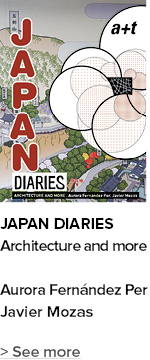




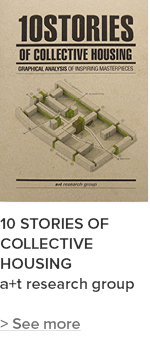

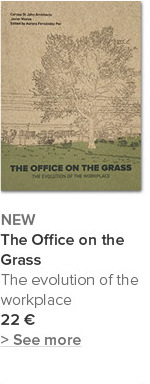
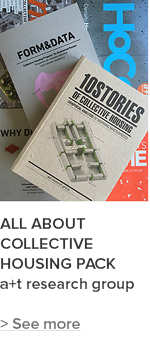
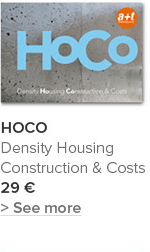

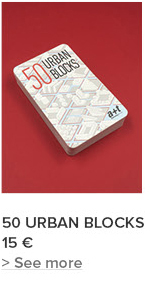
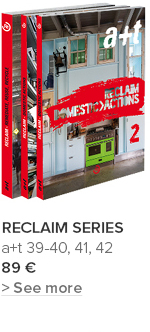

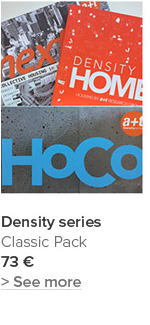





 I've read and agree to
I've read and agree to 


